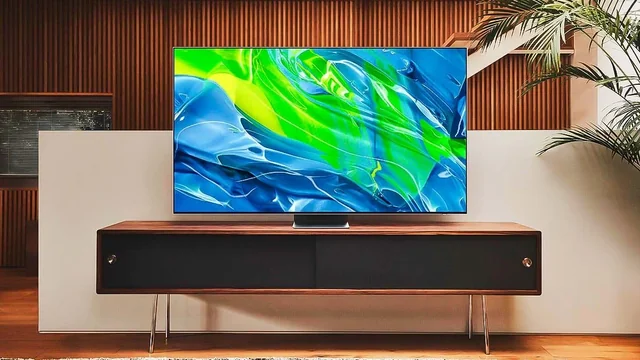Technology News
What is OLED TV? The Premium Display Technology Explained
14 September 2024
|
Zaker Adham
Are you in the market for a new TV? If so, you’ve likely come across OLED TVs.

This cutting-edge technology, which stands for Organic Light Emitting Diode, has captivated home entertainment enthusiasts worldwide with its stunning picture quality, unmatched black levels, and vibrant colors.
But what exactly is an OLED TV? How does it compare to other TV technologies like QLED, mini-LED, or QD-OLED? In this guide, we’ll explore what OLED TV is, how it works, who manufactures them, and why it might be the perfect choice for your next television.
Understanding OLED Technology
OLED TVs use organic compounds in their pixels that emit their own light when an electric current passes through them. Unlike traditional LED, QLED, or LCD TVs that require a backlight, OLED’s self-emissive nature allows for superior picture quality. Let’s dive deeper into the benefits of OLED TVs and why they have become so popular.
Inky Blacks and Deep Contrast: Each pixel in an OLED TV can be turned off completely, resulting in true black levels and unrivaled contrast. This feature delivers an incredibly lifelike viewing experience with vibrant, accurate colors.
Wide Viewing Angles: OLED screens maintain color accuracy and consistency even when viewed from extreme angles, making them ideal for large living rooms with multiple seating arrangements.
Thin and Flexible Designs: Without the need for backlight layers, OLED panels can be incredibly thin, allowing for sleek and even flexible or curved TV designs.
Excellent Response Time: OLED TVs offer fast response times, virtually eliminating motion blur. This is particularly appealing to sports fans and gamers who crave seamless action without delay.
Why Choose an OLED TV?
Investing in an OLED TV means prioritizing picture quality and performance. OLEDs offer unparalleled black levels, making them perfect for dark room viewing. They also get plenty bright, making them versatile for all types of content, from movies to sports.
Gamers will appreciate the high refresh rates and low response times, like the 2024 LG G4 OLED, which supports up to 4K/120Hz inputs and has a response time of 0.1 milliseconds. Additionally, OLED TVs’ slim design makes them a stylish addition to any home entertainment setup. They are also more energy-efficient than their LCD counterparts.
Considerations Before Buying
While OLED TVs have many advantages, there are some considerations to keep in mind:
Price: OLED TVs are generally more expensive than LED/LCD models, though prices are gradually decreasing.
Screen Burn-In: Newer models have mitigated this issue, but static images can still cause burn-in over time.
Brightness Levels: OLEDs may not be as bright as some LED TVs, which can be noticeable in very bright environments.
Size Considerations
As OLED panels get larger, their cost increases significantly. In the 50- to 65-inch range, OLED TVs are competitively priced with LED and QLED TVs. However, larger sizes can be much more expensive.
The Role of LG Display
LG Display is a leading manufacturer of OLED panels, known for their exceptional picture quality, vibrant colors, and deep blacks. They supply panels to several brands, including Sony, Samsung, and Panasonic, ensuring consistent visual performance across different brands.

What About Samsung and Other Manufacturers?
Samsung initially focused on AMOLED technology for its mobile devices but later ventured into the OLED TV market. However, they shifted focus to QLED technology, which offers improvements in brightness and color gamut. Samsung continues to innovate with QD-OLED, a hybrid technology combining quantum dots and OLED.
Sony
Sony uses LG Display’s OLED panels and integrates its proprietary technologies to enhance the audio-visual experience. Their Acoustic Surface Audio technology turns the entire screen into a speaker, providing immersive sound.
Panasonic
Panasonic is known for its critically acclaimed OLED TVs, especially for color accuracy. They use LG Display panels and their own image processing techniques to refine picture quality.
The Future of OLED TV Production
As manufacturers continue to invest in OLED technology, we can expect advancements that enhance performance, reduce costs, and offer more flexible display options. OLED applications extend beyond TVs to smartphones, tablets, and wearables.
OLED TVs represent the pinnacle of current television technology, offering exceptional picture quality, especially in dark environments. They are an excellent choice for those who value cinematic quality and are willing to invest in top-tier technology.




